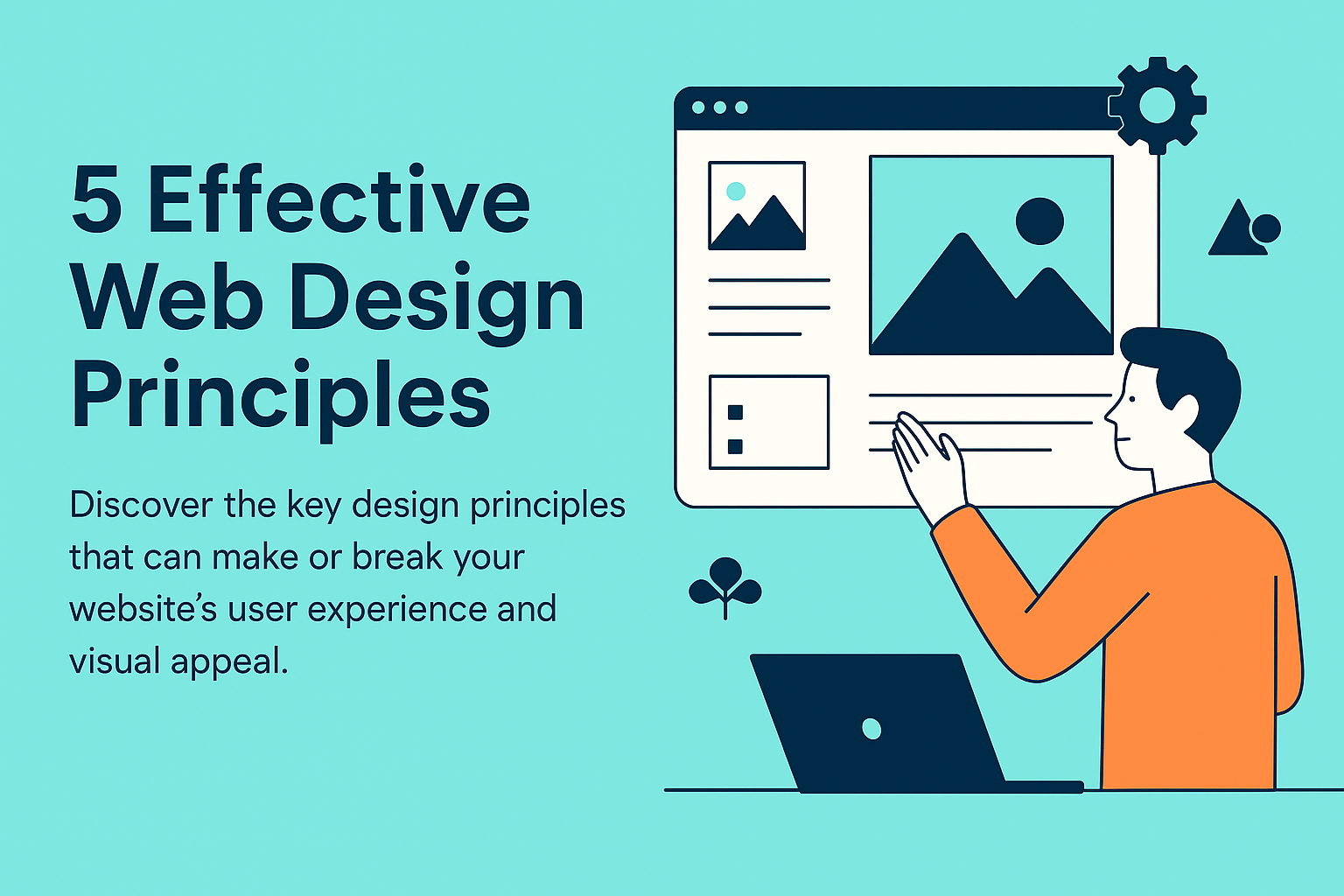5 Effective Web Design Principles

Discover the key design principles that can make or break your website’s user experience and visual appeal.
1. Simplicity
A clean and uncluttered design helps users focus on what matters most. Avoid overwhelming visitors with excessive elements; prioritize clear layouts and minimalistic aesthetics to enhance usability.
2. Consistency
Maintain uniform design elements like fonts, colors, and button styles across your site. Consistency creates a cohesive experience, making navigation intuitive and reinforcing your brand identity.
3. Visual Hierarchy
Guide users’ attention with strategic use of size, color, and spacing. Highlight key elements like calls-to-action or important content to ensure users find what they need quickly.
4. Accessibility
Design with all users in mind. Use high-contrast colors, readable fonts, and alt text for images to ensure your site is usable for people with disabilities, improving both inclusivity and SEO.
5. Responsive Design
Ensure your website adapts seamlessly to different devices and screen sizes. A responsive design provides a consistent experience, whether users are on a desktop, tablet, or smartphone.
"Good design is obvious. Great design is transparent." – Joe Sparano
By applying these five web design principles, you can create a website that is not only visually appealing but also user-friendly and effective in engaging your audience. Focus on the user experience to drive better interaction and retention.